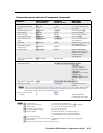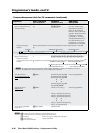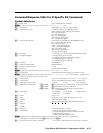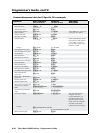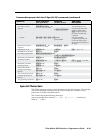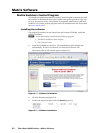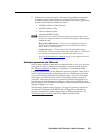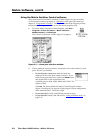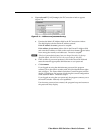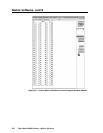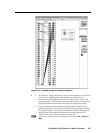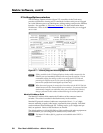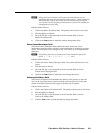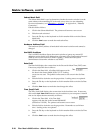
5-3
Fiber Matrix 6400 Switcher • Matrix Software
4. Follow the on-screen instructions. By default, the installation of the Matrix
Switchers Control Program creates a C:\Program Files\Extron\ Matrix_
Switchers directory, and it places the following four icons into a group folder
named “Extron Electronics\Matrix Switchers”:
• MATRIXSwitcher+ControlProgram
• MATRIXSwitcher+Help
• CheckforMatrixUpdates
• UninstallMATRIXSwitcher
N
Besides the LAN port, the Fiber Matrix switcher can support remote control
via either the rear panel Remote RS-232/RS-422 Remote port or the front panel
Configuration port.
Remote RS-232/RS-422 port — The port can be configured for either the
RS-232 or RS-422 serial communication protocol and operate at the 9600,
19200, 38400, or 115200 baud rate.
Configuration port — The port supports RS-232 serial communication
protocol only. The port can operate at the 9600, 19200, 38400, or 115200 baud
rate, but Extron recommends leaving this port at the 9600 baud rate.
See the Serial port parameters commands on page 4-19 to configure either port
using an SIS command.
Software operation via Ethernet
When a matrix switcher is connected to an Ethernet WAN or LAN, up to 200 users
can operate it, locally or remotely, using the Matrix Switchers Control Program.
See “Ethernet connection” in chapter 2, “Installation”, for installation details.
Connection to the switcher via the Ethernet is password protected. There are two
levels of password protection: administrator and user. Administrators have full
access to all switching capabilities and editing functions. Users can select inputs
and outputs, set and recall presets, and view all settings with the exception of
passwords. If the same password or no password is required for logging on, all
personnel log on with administrator privileges. Fields and functions that exceed
user privileges are not selectable in the Matrix Switchers Control Program when the
operator is logged on as a user.
The IP Settings/Options window (figure 5-7 on page 5-8) provides a location for
viewing and, if connected via the RS-232 link or if logged on via the Ethernet
port as an administrator, editing settings unique to the Ethernet interface. See
“IP Settings/Options window” later in this chapter for more details.



